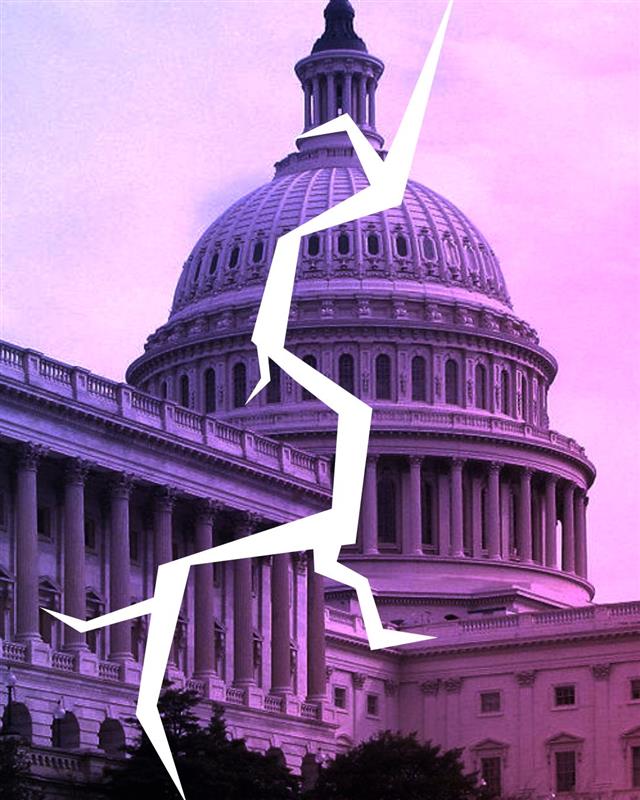How do you believe political accountability today compares to the era of Watergate?
The Watergate scandal led to Nixon’s resignation in 1974, with bipartisan support for impeachment after evidence revealed his involvement in a cover-up. Unlike in today’s hyper-partisan climate, many Republicans then were willing to hold him accountable. Since Nixon, impeachment has become more politically divisive, as seen with Clinton and Trump. While impeachment is the most extreme tool, Congress has other means of accountability. Passing new laws to check executive power is one option. During Nixon’s time in office, Congress passed reforms like the War Powers Resolution and Impoundment Control Act. Today, similar challenges persist, but bipartisan resolve is largely absent, mainly because Republicans are too scared to cross Trump.
This is an excellent question. Let me begin by noting that all the details regarding Watergate are too numerous to describe here. The short of it, for those who aren’t familiar with this particular scandal, is that it began when individuals associated with Richard Nixon’s re-election campaign were arrested at the Democratic National Committee’s headquarters at the Watergate complex in Washington, DC’s Foggy Bottom neighborhood in June 1972 while planting listening devices and stealing documents. From that point, a series of events—the Senate Watergate Committee’s hearings, the Saturday Night Massacre, a trail of corruption and perjury, and a tape recording implicating Nixon in the cover-up—ultimately led to the downfall of a presidency in August 1974.
The political dynamics today are significantly different from those in 1974 when the House began its impeachment inquiry through H.Res. 803. There were only four votes—all Republicans—against the impeachment inquiry. The three articles of impeachment that the House Judiciary Committee approved in July 1974 had bipartisan support. Granted, a majority of Republicans on the committee opposed those three articles of impeachment, but the support for them is still notable.
What little support Nixon had when the House Judiciary Committee approved the articles of impeachment eroded when the “smoking gun” tape implicated Nixon in the cover-up. It was almost a certainty that Nixon would be impeached when the House began debating the articles of impeachment the week of August 19. Sen. Bob Dole (R-KS) speculated that Nixon “had no more than 20” votes against conviction in the Senate if he were impeached in the House. Sen. Barry Goldwater (R-AZ), Senate Minority Leader Hugh Scott (R-PA), and House Minority Leader John Rhodes (R-CA) met with Nixon on August 7, 1974. They provided him with an assessment of his nonexistent political future. Nixon resigned on August 9.
Today’s atmosphere is guided by hyper-partisanship. That’s not to say that political polarization didn’t exist in 1974. It wasn’t even close to the level we have today. The fact that large numbers of members of Nixon’s party were prepared to vote to impeach him in the House and convict him in the Senate speaks to that. Impeachment itself has become too weaponized. This goes back to Bill Clinton’s impeachment in 1998, despite a handful of Democrats voting for three of the four articles of impeachment in the House. (Only one Democrat voted for the fourth article.) The first Trump impeachment in 2019 seemed like Democrats were looking for an excuse. The second Trump impeachment was the first legitimate use of impeachment power since Nixon, but the first attempt made it harder for Republicans to support. Only ten Republicans voted for it. Two of those Republicans are still in the House. Only seven Republicans voted for conviction in the Senate, ten short of the 17 needed to convict.
Of course, there are various forms of accountability. Impeachment is the most extreme. There are other ways to hold a president accountable. That includes censure, passing new laws to curtail executive power, oversight and investigations, and the power of the purse in the appropriations process. All of these are options available to this Congress. Some of them are the same steps Congress took during Nixon’s presidency. For example, Congress passed the War Powers Resolution to check the president’s power to engage in military actions and the Impoundment Control Act to limit an administration’s ability to withhold appropriated funds. Unfortunately, we’re experiencing some of the same problems today that we faced during Nixon’s time. The only difference is that Republicans today lack the same courage and will that Republicans had when Nixon was in office.
How concerned are you about the impact of disinformation on political behavior and public sentiment?
Disinformation—especially from Russia—has influenced U.S. politics, notably in 2016 and regarding Ukraine. Americans are vulnerable in part due to declining trust in traditional media; a 2024 Gallup poll found only 31% trust mass media. This distrust, fueled by partisan outlets and some real cases of media bias, drives people to echo chambers that amplify misinformation. Disinformation worsens polarization, erodes trust in elections, and shapes political outcomes. To combat this, it's important to seek diverse, credible sources and verify original data when possible.
Definitely, and it’s been a concern of mine for several years now. Regardless of what the Trump administration has recently claimed, it’s well documented that Russia has operated disinformation campaigns in the United States, most notably in the 2016 presidential election and regarding the Russian invasion of Ukraine. Separately, a now-defunct media company allegedly funneled Russian money to far-right American content creators with large followings. The far-right content creators—which include Tim Pool and Benny Johnson—deny any wrongdoing and claim to be victims.
Americans remain vulnerable to disinformation, in part because trust in the traditional media is so low. Gallup released a survey in February showing that 36% of Americans have no trust in mass media, which includes TV and newspapers, while another 33% don’t have very much trust. Only 31% trust mass media a great deal or a fair amount. Although 59% of Republicans have no trust in mass media, 42% of independents have the same opinion.
The decline of trust in media has really coincided with the rise of 24/7 cable news with a partisan bent, such as Fox News and MSNBC, and other partisan traditional and nontraditional media. To be clear, there are some valid concerns about bias in traditional media. Examples include the 2004 story CBS aired on George W. Bush allegedly receiving preferential treatment in the Texas Air National Guard, the 2014 allegations of sexual violence at the University of Virginia, and the coverage of the discredited Steele dossier are good examples of bias. However, it’s a stretch to claim that all mainstream media sources are biased, but the perception of bias is the reality.
The lack of trust has led people to seek out information sources that reinforce their preexisting biases. Readers or viewers get much more opinion than fact. These sources are biased to one side or the other and often present misleading and incomplete information and/or false narratives. It’s frustrating to see disinformation become so normalized, and it’s clear that it affects political behavior. There’s a volume of peer-reviewed studies showing that disinformation increases political polarization, reduces trust in elections, and affects political outcomes.
How can you discern? I tend to get my news from traditional sources. I read The Hill, Wall Street Journal, and Reason. If a reporter is covering a report or a data source, I often go find that data source and look at it myself. Not everyone can or knows how to do that. I recommend using Ad Fontes Media’s Media Bias Chart to help you determine which sources are more trusted and which ones should be viewed skeptically.
Are we really bringing in so much revenue from tariffs that we can afford rebates to everyone?
Tariff revenue has increased—$108 billion through June, up significantly from FY 2024—but it still accounts for just 3% of total federal revenue. A $27 billion June surplus drew Trump’s attention. Despite the surplus in June, the federal deficit for FY 2025 stands at $1.339 trillion, with spending up $247 billion over last year. Direct payments would further increase deficits, which are already expected to rise by $3.4 trillion because of the passage of OBBBA.
No, but let me explain where this is coming from. It shouldn’t surprise anyone that increasing tariffs will bring in more revenue to federal coffers. Tariff revenue is, indeed, up by a significant amount. Through June, the federal government collected $108 billion in customs duties. That’s more than $52 billion more than the same period in FY 2024 and about $45 billion higher than the estimate for all of FY 2025. Still, the $108 billion from customs duties is about 5% of the roughly $2.1 trillion in receipts from individual income taxes, or about 3% of all revenue sources.
The reason this is coming up is because the federal government ran a surplus of $27 billion in the month of June. It’s not the first time the federal government has run a surplus. It’s not even the first time in recent years, although it typically happens in April, when tax season is in full swing. Recent months in which the federal government saw a surplus include January 2022, August 2023, and September 2024. Granted, it’s an increasingly rare achievement. The surplus in June has more to do with timing shifts in outlays from the federal government. The Congressional Budget Office (CBO) explained that had those shifts not occurred, there would’ve been a budget deficit of $71 billion in June.
Amid falling approval ratings and higher customs duty revenue, Trump floated the idea of direct payments to Americans as a so-called “rebate” because of the tariff revenue. That has been introduced in legislative form by Sen. Josh Hawley (R-MO), who is proposing sending direct payments of $600 per adult and dependent child, with a very limited reduction of 5% for individuals who earn above certain income thresholds.
The federal government has run a budget deficit of $1.339 trillion through the first three quarters of FY 2025. Spending is still $247 billion higher than it was at the same point in FY 2024. Unless Congress considers modernizing social programs that are contributing to the budget deficit, the red ink from Washington will only get worse after the passage of the so-called “One Big Beautiful Bill Act,” which, the CBO projects, will add $3.4 trillion in deficits (excluding interest costs) over the next ten years. Trump’s idea of “rebates” will only add to the deficit in a substantial way.




%201.jpg)
